Are you tired of sweating profusely in your stuffy tent, desperately longing for relief during those scorching summer nights? Look no further, because we have the perfect solution waiting for you – a DIY camping air conditioner! Say goodbye to sleepless nights and uncomfortable temperatures that leave you feeling drained and restless. With this ingenious and easy-to-make air conditioner, you can experience true comfort and enjoy your camping trip to the fullest. Picture yourself basking in the cool breeze generated by your homemade cooling device, savoring the blissful sensation of relaxation amidst nature’s embrace. So why wait? Embark on your adventure with confidence, knowing that you have the ultimate ally in combating the sweltering heat. Upgrade your camping experience with our DIY camping air conditioner and make memories that will last a lifetime!
The Importance of Staying Cool While Camping
Camping is an incredibly enjoyable outdoor activity that allows you to truly connect with nature, rejuvenate your mind and body, and create unforgettable memories that will last a lifetime. Picture yourself surrounded by the serene beauty of towering trees, the melodious sounds of chirping birds, and the soothing rustle of leaves in the gentle breeze. It’s a chance to escape the hustle and bustle of everyday life and immerse yourself in the tranquility of the great outdoors.
That’s precisely where a camping air conditioner comes to the rescue! With its ingenious cooling capabilities, it provides a much-needed respite from the relentless heat, transforming your camping experience into a blissful oasis of comfort. Not only does it help you sleep soundly, but it also wards off the perils of heat exhaustion and dehydration – two common dangers of camping in hot weather. By maintaining a cool and comfortable environment inside your tent, it ensures that you wake up refreshed and ready to embrace the adventures that lie ahead.
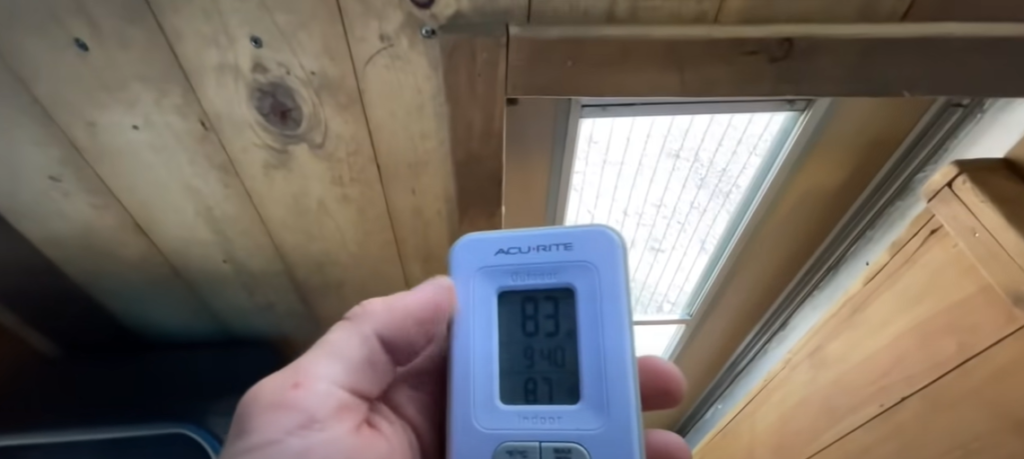
Now, you might be wondering, why should you choose a DIY camping air conditioner instead of simply purchasing a ready-made one? Well, aside from being a cost-effective solution, it grants you the freedom to customize and adjust the cooling effect according to your specific needs. You can tailor it precisely to create your ideal temperature oasis amidst the wild, allowing you to revel in the perfect balance of coolness and coziness. Moreover, embarking on a DIY camping air conditioner project can be a delightful endeavor that involves the entire family. It adds a touch of excitement and a sense of accomplishment, making your camping trip a truly memorable bonding experience for everyone involved.[3]
How Does a Camping Air Conditioner Work?
At its core, a camping air conditioner operates on the principle of evaporative cooling. It utilizes a simple yet effective process that mimics the natural phenomenon of sweat evaporation to produce cool and refreshing air.
The device consists of three main components: a fan, an ice chest or cooler, and a looped system for water circulation. The fan, strategically placed in the tent, pulls in the hot air from the surroundings and passes it over a specially designed moistened pad inside the cooler. As the hot air comes into contact with the pad, the water on the surface evaporates, absorbing the heat and lowering the temperature of the air. This cooled air is then blown back into the tent, creating a pleasant and refreshing breeze that circulates throughout the space.
The continuous circulation of hot air through the cooling system ensures that your tent stays comfortably cool, even in the hottest of environments. It allows you to enjoy a good night’s rest without breaking a sweat, providing a more enjoyable camping experience overall. So, whether you’re camping in the scorching heat of the summer or exploring tropical destinations, a camping air conditioner can be a game-changer, keeping you cool and comfortable throughout your outdoor adventures.[3]
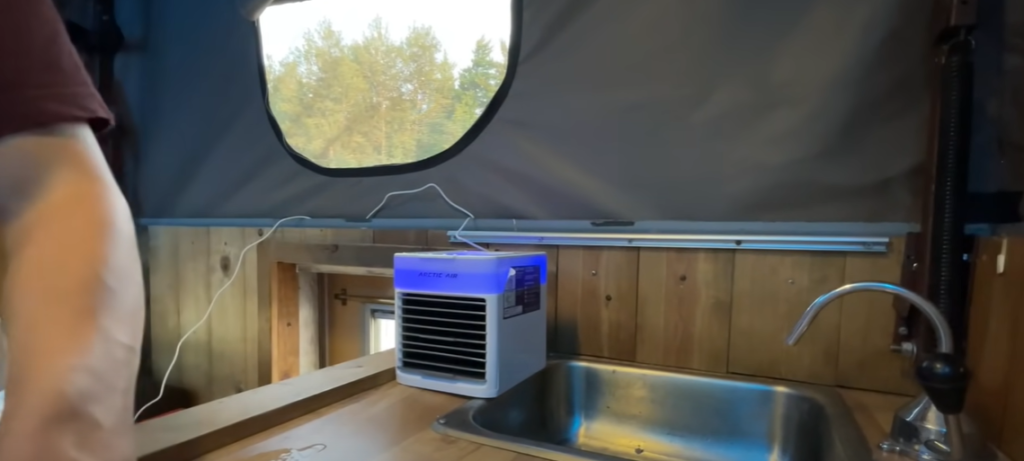
Key Considerations Before Building Your Own Camping Air Conditioner
Before you embark on your DIY camping air conditioner project, there are a few essential factors to consider. Here are some key tips that will help you create the perfect cooling device for your outdoor needs:
- Choosing the right cooler: The size and type of cooler play a crucial role in determining the effectiveness of your camping air conditioner. A larger cooler with thicker walls will provide better insulation and maintain the coolness of your ice for a more extended period. Additionally, opt for a cooler with a drain plug to minimize leakage and make it easier to refill.
- Selecting the right fan: The fan you choose should be powerful enough to circulate the air effectively throughout your tent. Look for fans with higher CFM (cubic feet per minute) ratings for better air circulation.
- Pre-freezing your water bottles: To maximize the cooling effect, it’s recommended to freeze a few water bottles beforehand and use them in place of regular ice. This will ensure that your cooler stays cold for longer, providing more prolonged relief from the heat.
- Adding essential oils or menthol: You can enhance the refreshing qualities of your camping air conditioner by adding a few drops of essential oils or menthol to the water. These natural ingredients provide a calming and soothing aroma, making it easier for you to drift off into a peaceful slumber.[3]
Materials and Tools Needed for a DIY Camping Air Conditioner
To build your own camping air conditioner, you’ll need a few essential materials and tools. First, find a sturdy cooler or ice chest that can hold the necessary components. Look for a powerful fan with a high CFM (cubic feet per minute) rating to ensure optimal airflow. Don’t forget to gather enough ice or frozen water bottles to keep the air cool inside the cooler.
Make sure to have duct tape or zip ties on hand to secure the components in place. A pair of scissors or a knife will come in handy for cutting and shaping any necessary parts. If required, a drill can be used to create any additional holes for ventilation.
With these readily available materials and tools, you’ll be well-equipped to create your very own camping air conditioner. Enjoy the cool breeze and comfort it brings during your outdoor adventures![1]
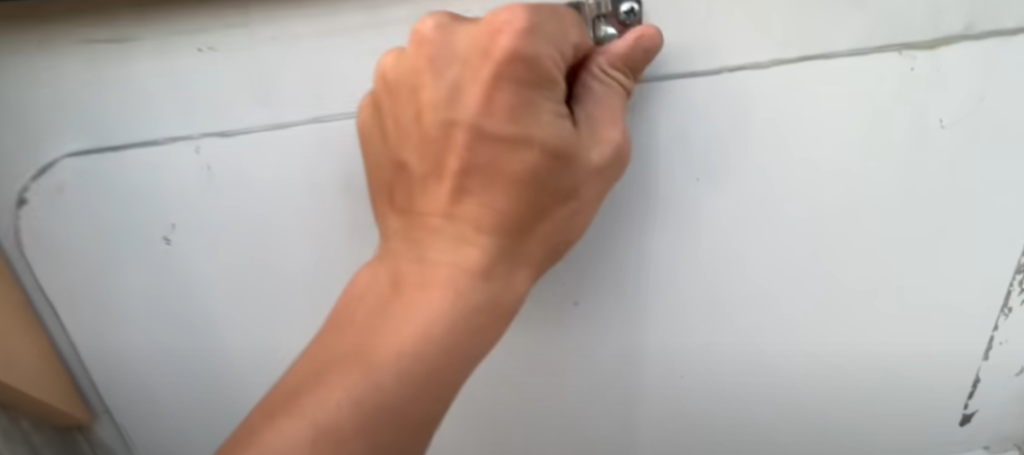
Building Your Portable Cooling System
Now that you have all the necessary materials and tools, it’s time to get started on building your DIY camping air conditioner. Here’s a step-by-step guide to help you create your very own portable cooling system:
- Begin by carefully measuring and marking the desired location for the fan on the lid of the cooler. Use a marker or pencil to ensure accuracy.
- Using a sharp utility knife or a suitable cutting tool, carefully cut along the marked lines to create an opening in the lid. Take your time to make clean and precise cuts for a neat finish.
- Once the opening is complete, place the fan inside the cooler. Make sure the fan is centered and aligned properly with the opening. To secure the fan in place, you can use strong duct tape or sturdy zip ties. This will ensure that the fan stays securely attached and doesn’t move around during operation.
- To ensure proper airflow and water circulation, create a hole on the side of the cooler. This hole will allow water to be drawn in and circulated by the fan, enhancing the cooling effect. Use a drill or a suitable cutting tool to create a round hole of appropriate size.
- Now, it’s time to create a support for the ice bottles inside the cooler. Cut a piece of cardboard or foam to fit snugly inside the cooler. The support should be positioned at an angle, leaning against the fan. This will provide stability for the ice bottles and allow for better air circulation within the cooler.
- Fill the cooler with ice or frozen water bottles, ensuring that there is enough space left for water circulation. The ice will act as the cooling agent, lowering the temperature inside the cooler and creating a refreshing breeze when the fan is turned on.
- For an added touch of relaxation, you can pour a small amount of water into the cooler. This will help to increase the humidity and add a refreshing mist to the cool air that is blown into your tent. If desired, you can also add a few drops of essential oils or menthol for a soothing and aromatic experience.
- Finally, it’s time to turn on the fan and enjoy the refreshing cool air that fills your tent! Sit back, relax, and let the DIY cooler fan create a comfortable environment for you to unwind and beat the heat.[1]
By following these detailed steps, you can create a customized and effective cooling solution for your tent, ensuring a comfortable and enjoyable camping experience even on the hottest days.
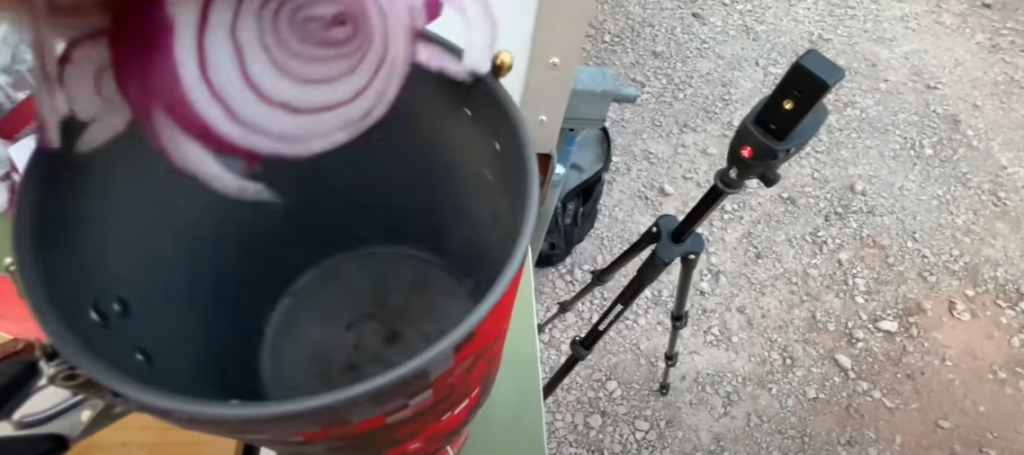
Power Options for Your DIY Camping Air Conditioner
Depending on your camping location and the availability of power sources, you may need to consider alternative options for powering your DIY air conditioner. Here are a few suggestions:
- Battery-powered fan: If you’re camping in a remote location without access to electricity, opt for a battery-operated fan as an alternative power source. Make sure to pack extra batteries to ensure your fan doesn’t run out of power during your trip.
- Solar-powered fan: For eco-friendly and sustainable camping, consider using a solar-powered fan. These fans are powered by the sun’s energy and require no additional power sources. Just make sure to place the solar panel in direct sunlight for optimal charging.
- Portable generator: If you have access to a generator, you can use it to power your DIY air conditioner. However, make sure to consider the noise level and any regulations in your camping area before using a generator.[1]
By exploring these power options, you can ensure that your camping air conditioner is always up and running, providing much-needed relief from the heat during your outdoor adventures.
Cooling Alternatives for Your DIY Camping Air Conditioner
While the DIY camping air conditioner is a great option, there are other cooling alternatives that you can consider as well. These include:
- Portable swamp cooler: Similar to the DIY air conditioner, a portable swamp cooler uses water and ice to cool down the surrounding area. These coolers are specifically designed for outdoor use and may have additional features such as a larger water tank and multiple fan speeds. With their efficient cooling capabilities, they can provide a refreshing breeze on hot summer camping trips, creating a more comfortable environment for outdoor enthusiasts.
- Battery-powered personal fan: If you’re looking for a smaller and more portable solution, a battery-operated personal fan is a great option. These fans are compact and lightweight, making them easy to carry on your camping trips. With their adjustable fan speeds, they allow you to customize the airflow according to your preference, providing a cooling effect wherever you go. Whether you’re hiking, lounging by the campfire, or relaxing in your tent, a battery-powered personal fan can help you beat the heat.
- Cooling towels: Another cooling alternative is using special cooling towels that can be soaked in water and placed on your body to provide instant relief from the heat. These towels are compact, lightweight, and reusable, making them a convenient option for camping trips. The unique fabric of these towels allows for quick evaporation, creating a cooling sensation on your skin. Whether you’re on a challenging hike or simply enjoying the great outdoors, cooling towels can help you stay cool and refreshed throughout your camping adventure.[1]
By exploring these cooling alternatives, you can find the best solution that fits your specific needs and preferences. Whichever option you choose, always make sure to stay hydrated and take breaks in the shade to beat the heat and stay safe during your camping adventures.
Testing and Troubleshooting
Before heading out on your camping trip, it’s always a good idea to test and troubleshoot your DIY camping air conditioner to ensure that it is functioning correctly. Here are some tips for testing and troubleshooting:
- Test your fan: Before assembling the cooler fan, make sure to test the fan separately by connecting it directly to a power source. This will ensure that the fan is functioning properly before adding it to your cooler.
- Check for leaks: Once you have filled the cooler with ice and water, make sure to check for any leaks. If there are any holes or cracks in your cooler, it may not hold in the cold air effectively and can lead to a less efficient cooling experience.
- Adjust angles and position: If you find that the airflow is not reaching your tent or desired area, adjust the angle and position of the fan. You may need to experiment with different angles until you find the optimal setup for your specific camping environment.
- Keep ice replenished: As the ice melts, make sure to replenish it regularly to maintain a consistent cooling effect. This will also ensure that your fan is not constantly blowing warm air.[2]
By testing and troubleshooting your DIY camping air conditioner, you can address any potential issues before heading out on your trip and ensure a refreshing and comfortable camping experience.
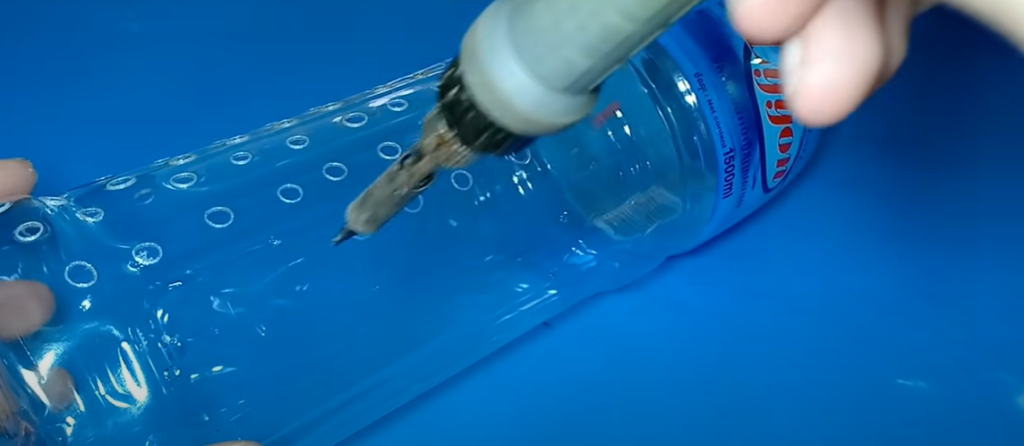
Maintenance and Care
To ensure the longevity and effectiveness of your DIY camping air conditioner, it’s essential to properly maintain and care for it. Here are some tips for maintenance and care:
- Clean the fan regularly: Dirt, dust, and debris can accumulate on the blades of your fan, reducing its efficiency. Make sure to clean the blades regularly with a damp cloth to keep your fan running smoothly.
- Empty and dry cooler after use: To prevent mold and mildew, make sure to empty and thoroughly dry your cooler after each use. This will also ensure that your DIY air conditioner is ready for your next camping trip.
- Store in a cool, dry place: When not in use, store your DIY camping air conditioner in a cool, dry place to prevent damage and ensure its longevity.[2]
Safety Precautions and Tips
When using your DIY camping air conditioner, it’s essential to prioritize safety and consider these precautions and tips:
- Use caution around water: When filling your cooler with ice and water, make sure to use caution and avoid spilling the water on yourself or electrical components.
- Keep electronics dry: Make sure to keep all electronic components of your DIY air conditioner dry. If there is any moisture on the fan or wiring, it can lead to electrical hazards.
- Monitor heat levels: While your DIY air conditioner can provide relief from the heat, it’s essential to also monitor your body and stay hydrated in hot weather conditions. Take breaks in the shade and make sure to drink plenty of water throughout your camping trip.[2]
By following these safety precautions and tips, you can enjoy the benefits of your DIY camping air conditioner while also staying safe and comfortable.
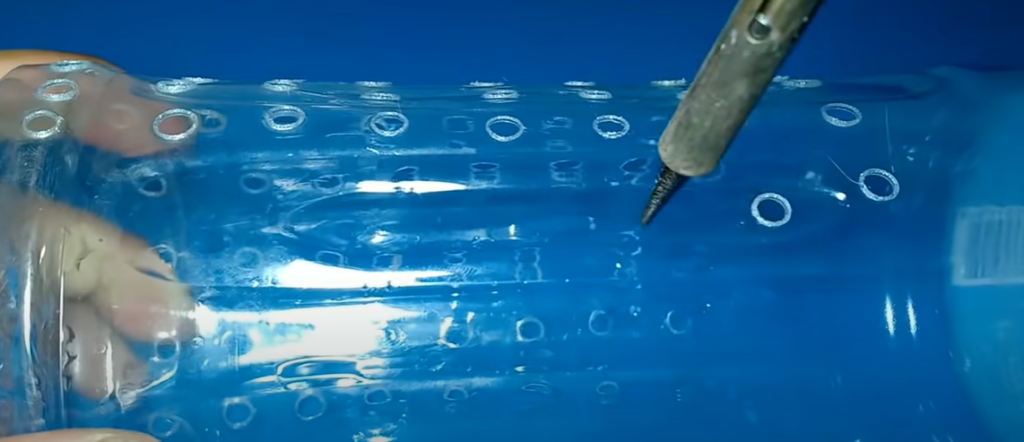
FAQ
How to make a cheap air conditioner?
There are several methods for making a cheap air conditioner, including using a bucket, fan, and ice as mentioned in this guide. You can also try using a cooler and frozen water bottles or making your own swamp cooler using household materials. However, it’s important to note that these DIY solutions may not be as effective or long-lasting as commercial air conditioners. We recommend testing and troubleshooting your DIY air conditioner before heading out on your camping trip to ensure its effectiveness.
Does DIY AC really work?
Yes, DIY air conditioners can work to provide relief from the heat. However, their effectiveness may vary depending on factors such as the materials used and environmental conditions. It’s important to test and troubleshoot your DIY air conditioner before relying on it during a camping trip. Additionally, it’s essential to also take breaks in the shade and stay hydrated in hot weather conditions. We also recommend using a battery-powered fan as an alternative or supplement to your DIY air conditioner for maximum cooling.
Does ice bucket AC work?
Yes, an ice bucket AC can work to provide a cooling effect. However, its effectiveness may vary depending on factors such as the type and amount of ice used and environmental conditions. Additionally, an ice bucket AC may not be as long-lasting or efficient as commercial air conditioners. We recommend testing and troubleshooting your DIY air conditioner before relying on it during a camping trip. Also, make sure to take breaks in the shade and stay hydrated in hot weather conditions for maximum comfort.
Do mini AC units actually work?
Yes, mini air conditioner units can work to provide a cooling effect. These units are designed to be portable and often run on batteries or USB power. However, their effectiveness may vary depending on factors such as the size of the unit and environmental conditions. We recommend testing and troubleshooting your mini AC unit before relying on it during a camping trip. Also, make sure to stay hydrated and take breaks in the shade as well.
Why are portable AC not efficient?
Portable air conditioners may not be as efficient as other cooling methods because they typically use more energy and create excess heat. Additionally, their limited space and design may not allow for optimal airflow and circulation, leading to less effective cooling. It’s important to consider factors such as size, power source, and environmental conditions when choosing a portable AC for your camping trips. We recommend using a combination of methods, such as battery-powered fans and DIY air conditioners, for maximum effectiveness.
Useful Video: Car Camping with Arctic Air – Will it Work?
Conclusion
Creating a DIY camping air conditioner can be a cost-effective and practical solution for staying cool during your outdoor adventures. By using simple materials and following the tips in this guide, you can create your own portable cooling system that will make your camping experience more comfortable. Remember to test and troubleshoot before heading out on your trip, prioritize maintenance and safety, and consider alternative methods for cooling in combination with your DIY air conditioner. Happy camping!
References:
- https://www.popularmechanics.com/home/interior-projects/how-to/g2632/diy-air-conditioner/
- https://www.diycraftsy.com/diy-air-conditioner-projects/
- https://www.thecampingairconditioner.com/cgi-sys/suspendedpage.cgi





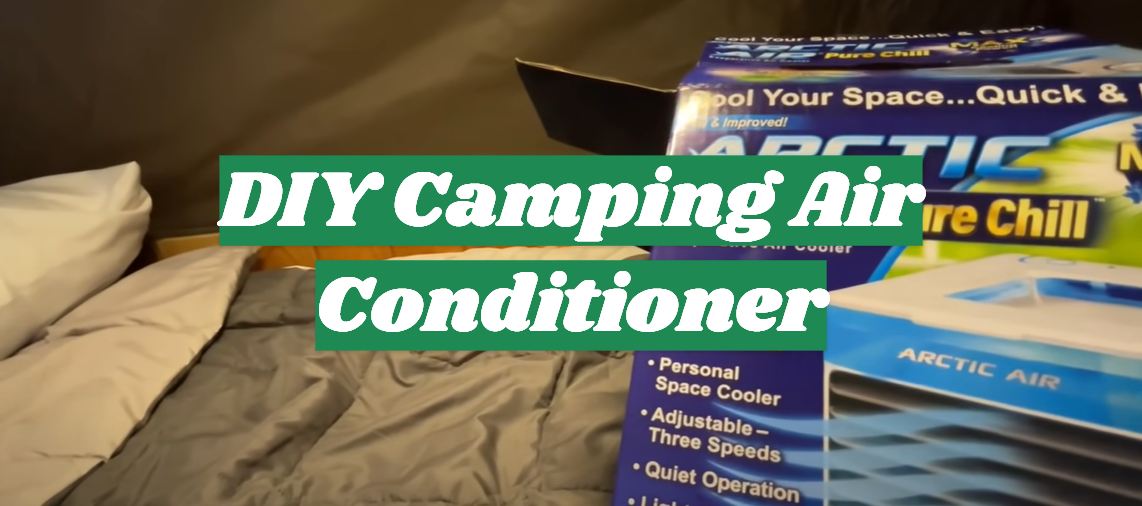




Leave a Review